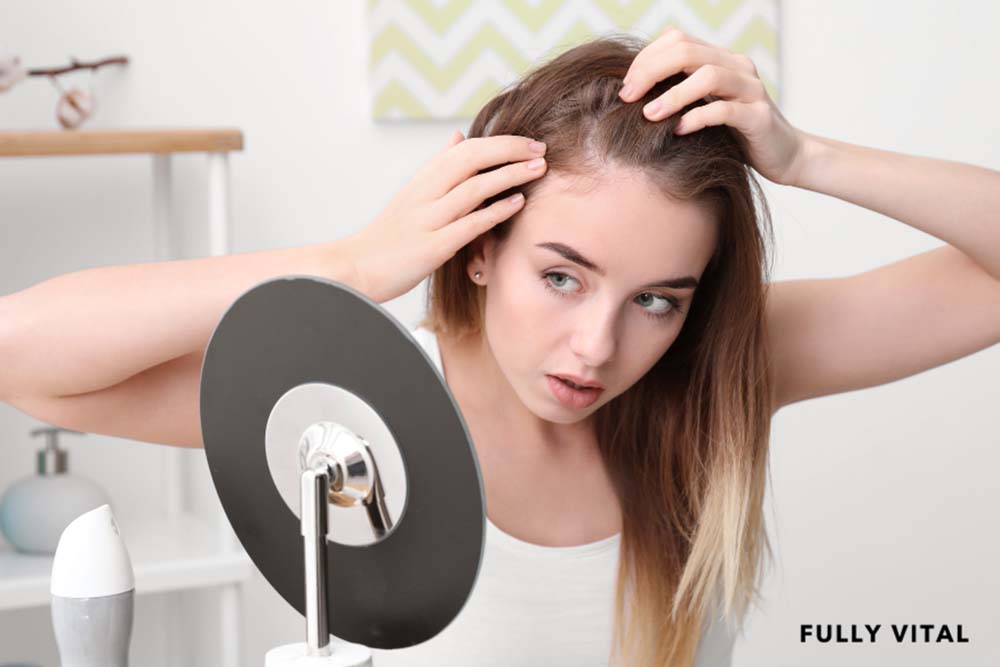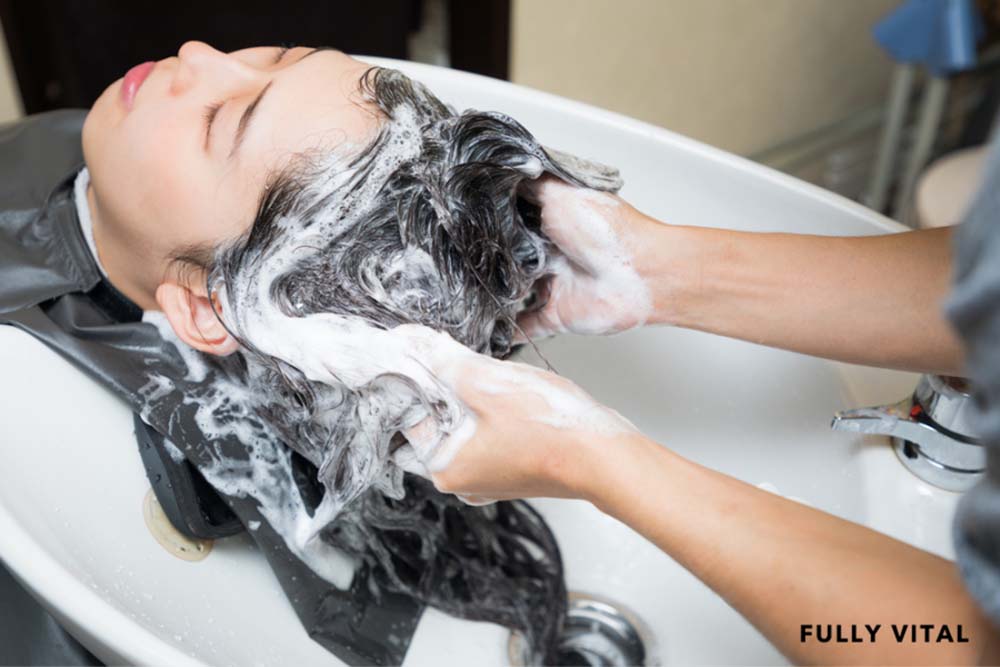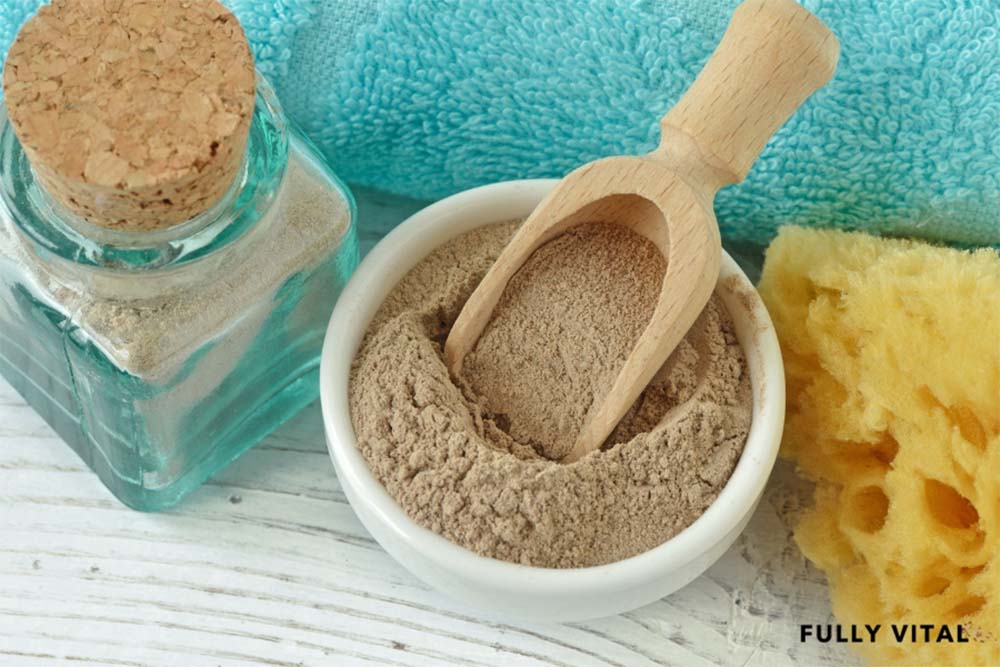
Unlocking the Secrets Of Trichostasis Spinulosa: A Comprehensive Guide
Welcome to our in-depth exploration of Trichostasis Spinulosa, a hair-related condition that can significantly impact your quest for lush and healthy locks. In this article, we will delve deep into the intricacies of Trichostasis Spinulosa. We will discuss what it is, why understanding it is essential, how it occurs, the numerous benefits of addressing it, potential downsides to its treatment, and explore a range of alternative approaches. Whether you're a woman with any hair type looking to stimulate hair growth or simply curious about this condition, we've got you covered.

I LOVE MY HAIR NOW
FullyVital hair serum and hair vitamins made tremendous improvements in my hair. I truly love my hair now.
Dorit S.,
What Is Trichostasis Spinulosa?
Trichostasis Spinulosa is a relatively uncommon but noteworthy hair-related condition. It occurs when hair follicles become clogged with tiny, vellus hairs. These trapped hairs often manifest as blackheads or small bumps on the skin's surface, primarily affecting areas like the face and neck.(1)

Why Is Understanding Trichostasis Spinulosa Important?
Understanding Trichostasis Spinulosa is vital for anyone on a hair growth journey. By unraveling the mysteries of this condition, you can make informed decisions regarding its management and prevention.
How Does Trichostasis Spinulosa Occur?
Trichostasis Spinulosa unfolds when hair follicles fail to shed properly. Instead of naturally falling out, these hairs become ensnared within the follicles. This entrapment can lead to the formation of small, dark spots on the skin, adversely affecting both the appearance and health of your hair.
What Are The Benefits Of Addressing Trichostasis Spinulosa?
Taking proactive measures to address Trichostasis Spinulosa can yield a plethora of benefits for your hair and overall confidence. By effectively managing this condition, you can:
Promote Healthy Hair Growth
Treating Trichostasis Spinulosa ensures that your hair follicles remain unblocked, allowing your hair to grow freely and vigorously.(2)
Enhance Skin Appearance
Clearing the trapped hairs can improve the texture and appearance of your skin, leaving it smoother, more radiant, and free from unsightly blemishes.
Boost Self-Esteem
As your hair and skin regain their vitality, your self-esteem and confidence can experience a significant boost.
Are There Any Downsides To Trichostasis Spinulosa Treatment?
While addressing Trichostasis Spinulosa can be highly beneficial, it's crucial to be aware of potential drawbacks. Some individuals may experience:
- Skin Irritation: Certain treatment methods may cause temporary skin irritation or redness, though this is usually mild and short-lived.
- Recurrence: In some cases, Trichostasis Spinulosa may reoccur, necessitating ongoing management and vigilance.
What Are the Alternatives To Trichostasis Spinulosa Treatment?
If you're exploring alternatives to trichostasis spinulosa treatment, consider these options:
- Hair Growth Products: Look for products designed to stimulate hair growth and maintain healthy follicles.
- Hair Care Practices: Adopt a hair care routine that minimizes hair breakage and promotes follicle health.
- Consulting a Specialist: Seek advice from a dermatologist or trichologist for personalized guidance.
Is Trichostasis Spinulosa a Follicular Disorder?
Trichostasis Spinulosa is indeed classified as a follicular disorder. It primarily affects hair follicles, leading to the formation of tiny, trapped vellus hairs within the follicles, which can resemble blackheads or small bumps on the skin's surface.
What Are Trichostasis Spinulosa Scalp Symptoms?
Trichostasis Spinulosa can manifest on various parts of the body, including the scalp. Scalp symptoms of Trichostasis Spinulosa may include:
- Small Bumps: These bumps, often mistaken for pimples, may appear on the scalp.
- Hair Texture: Affected areas may have uneven hair texture due to trapped vellus hairs.
- Itchiness: Some individuals with Trichostasis Spinulosa on the scalp may experience mild itchiness.
What Is the Differential Diagnosis of Trichostasis Spinulosa?
When diagnosing Trichostasis Spinulosa, healthcare professionals consider several differential diagnoses, as the condition can resemble other skin and hair issues. These may include:
- Acne: Trichostasis Spinulosa can mimic acne due to the presence of small bumps.
- Folliculitis: Folliculitis is another condition that may resemble Trichostasis Spinulosa, as both involve inflamed hair follicles.
- Keratosis Pilaris: This common skin condition can be mistaken for Trichostasis Spinulosa due to its appearance of tiny, rough bumps on the skin.
- Milia: Milia are small, white bumps that can be confused with Trichostasis Spinulosa lesions.
Proper diagnosis by a healthcare professional is essential for accurate treatment.
Can I Wax Trichostasis Spinulosa?
Waxing is generally not recommended for individuals with Trichostasis Spinulosa, as it can exacerbate the condition. Waxing may pull out or disturb the trapped vellus hairs, potentially leading to increased inflammation and discomfort.(3) It's advisable to explore alternative hair removal methods, such as shaving or laser hair removal, after consulting with a dermatologist.
How Is Trichostasis Spinulosa Treated?
Treatment for Trichostasis Spinulosa typically involves addressing the underlying issues with hair follicles and skin. Here are some common treatment approaches:
Topical Exfoliants
Dermatologists may recommend topical exfoliants to help unclog hair follicles and promote healthy skin.
Prescription Medications
In some cases, prescription-strength treatments like retinoids may be prescribed to address Trichostasis Spinulosa.
Laser Hair Removal
For long-term management, laser hair removal can be effective in preventing the recurrence of Trichostasis Spinulosa.
Professional Extraction
Dermatologists can perform professional extractions to remove trapped hairs and alleviate symptoms.
Skin Care Routine
Maintaining a consistent skincare routine that includes gentle cleansing and exfoliation can help manage Trichostasis Spinulosa.
Remember, the most suitable treatment plan should be determined by a healthcare professional after a thorough evaluation of your specific condition and needs.
What Is The History Of Trichostasis Spinulosa?
Trichostasis Spinulosa has a significant history that underscores its relevance in the realm of hair care and skin health. Understanding its historical context can shed light on why it is an important topic for a Hair Growth Product Company:
- Ancient Origins: Trichostasis Spinulosa is not a new discovery. Historical records and evidence suggest that this condition has been observed for centuries, with descriptions dating back to ancient medical texts.
- Medical Advancements: Over time, medical advancements have improved our understanding of Trichostasis Spinulosa. This knowledge has paved the way for more effective treatments and prevention strategies.
- Evolution of Hair Care: Trichostasis Spinulosa has played a role in shaping the development of hair care products and practices. It has led to innovations in skincare and haircare routines to address and manage the condition.
What Is The Current Environment Of Trichostasis Spinulosa?
To appreciate the significance of Trichostasis Spinulosa in the present day, it's crucial to consider the current environment surrounding this condition:
- Increased Awareness: Trichostasis Spinulosa has gained recognition in recent years, thanks to advancements in medical research and the dissemination of information through digital platforms. More people are now aware of its existence and its impact on hair and skin health.
- Rising Demand for Solutions: As individuals become more conscious of their appearance and hair health, there is a growing demand for effective solutions to manage and treat Trichostasis Spinulosa.
- Market Opportunities: The current landscape presents opportunities for Hair Growth Product Companies to develop innovative products tailored to address Trichostasis Spinulosa and cater to the needs of a discerning consumer base.
What Is The Future Of Trichostasis Spinulosa?
Looking ahead, the future of Trichostasis Spinulosa holds both challenges and opportunities that are pertinent to the Hair Growth Product Company's focus:
- Advancements in Treatment: Ongoing research and technological advancements may lead to more sophisticated and targeted treatments for Trichostasis Spinulosa, enhancing its management and prevention.
- Personalized Solutions: The future may see the development of personalized skincare and haircare regimens that consider an individual's unique skin and hair characteristics, including their susceptibility to Trichostasis Spinulosa.
- Consumer Education: With a focus on education and awareness, consumers will become more informed about Trichostasis Spinulosa and its management. This will drive the demand for effective products and services.
Unlock The Secret To Timeless Hair With Fully VitalExperience the transformation you've been longing for with our range of science-backed hair growth products. At Fully Vital, we're dedicated to helping you regain control over the aging process of your hair.
Join the Fully Vital community today and unlock the power of timeless hair. |
Final Thoughts On Trichostasis Spinulosa
Trichostasis Spinulosa is a condition that can significantly impact hair and skin health, making it an essential topic for those seeking a healthy and vibrant relationship with their locks. By understanding its causes, symptoms, and treatment options, you're well-equipped to take control of your hair's destiny.
At Fully Vital, we are committed to helping you nurture your hair's vitality. Our range of hair growth products is designed to combat the signs of aging and promote healthier, more resilient locks. Whether you're dealing with Trichostasis Spinulosa or simply striving for the best version of your hair, we have solutions tailored to your needs.
Explore our product offerings and discover the path to a more vibrant, youthful, and confident you. Your hair deserves the best, and Fully Vital is here to make that a reality.
Frequently Asked Questions About Trichostasis Spinulosa
Can Trichostasis Spinulosa affect hair growth in men?
Absolutely, Trichostasis Spinulosa can impact both men and women, regardless of hair type or gender.
Are there any natural remedies for Trichostasis Spinulosa?
While natural remedies such as exfoliating scrubs and gentle skincare routines may help manage the condition, it's advisable to consult a dermatologist for personalized treatment advice.
Can Trichostasis Spinulosa lead to permanent hair loss?
Typically, Trichostasis Spinulosa doesn't cause permanent hair loss, but it can affect the appearance and health of your hair.
How long does Trichostasis Spinulosa treatment take to show results?
The timeline for improvement varies depending on the chosen treatment method. It's essential to follow your healthcare professional's recommendations for the best and most timely results.
Is Trichostasis Spinulosa preventable?
Yes, prevention is possible with good skin care practices, including regular exfoliation, proper cleansing, and appropriate hair care routines.
Is Trichostasis Spinulosa contagious?
Trichostasis Spinulosa is not contagious. It is a non-communicable condition that arises from the trapping of vellus hairs within hair follicles. You cannot contract it from others.
Is Trichostasis Spinulosa painful?
Trichostasis Spinulosa is usually not painful. However, some individuals may experience mild discomfort or itchiness in the affected areas. If you encounter any discomfort, consult a dermatologist for appropriate treatment.
Can I pop the bumps caused by Trichostasis Spinulosa?
It is not advisable to pop or squeeze the bumps associated with Trichostasis Spinulosa. Attempting to do so may worsen the condition, cause inflammation, or lead to scarring. Professional extraction by a dermatologist is the recommended approach for managing these bumps.
Can Trichostasis Spinulosa go away on its own?
Trichostasis Spinulosa may persist if left untreated, but it can also improve or resolve spontaneously in some cases. However, it's often best to seek professional guidance for proper diagnosis and treatment to ensure effective management and prevent potential complications.
Are there any over-the-counter products for Trichostasis Spinulosa?
Yes, there are over-the-counter skin care products that may help manage Trichostasis Spinulosa. Look for products containing exfoliating ingredients like salicylic acid or glycolic acid. However, it's essential to consult with a healthcare professional before starting any new skincare regimen to ensure it is suitable for your specific needs and skin type.
Sources:
- Gündüz, Ö., & Aytekin, A. (2012). Trichostasis Spinulosa Confirmed by Standard Skin Surface Biopsy. International Journal of Trichology, 4(4), 273–274. https://doi.org/10.4103/0974-7753.111201
- Manuskiatti, W., & Tantikun, N. (2003). Treatment of Trichostasis Spinulosa in Skin Phototypes III, IV, and V With an 800-nm Pulsed Diode Laser. Dermatologic Surgery, 29(1), 85–88. https://doi.org/10.1046/j.1524-4725.2003.29013.x
- Kositkuljorn, C., & Suchonwanit, P. (2020). Trichostasis Spinulosa: A Case Report with an Unusual Presentation. Case Reports in Dermatology, 12(3), 178–185. https://doi.org/10.1159/000509993







